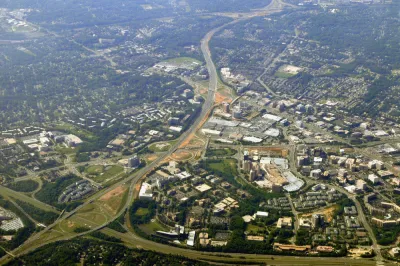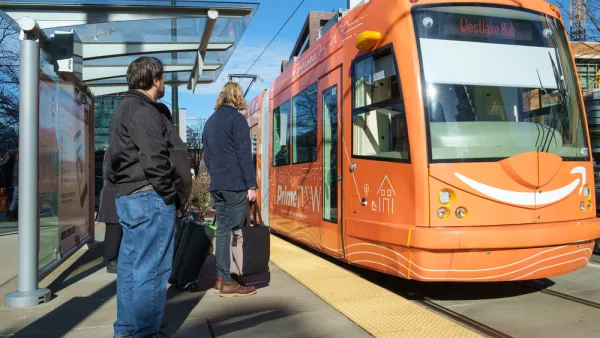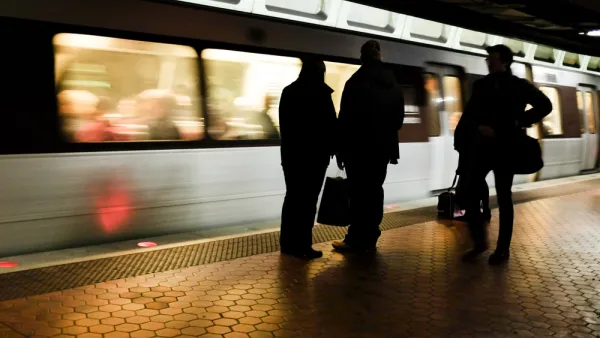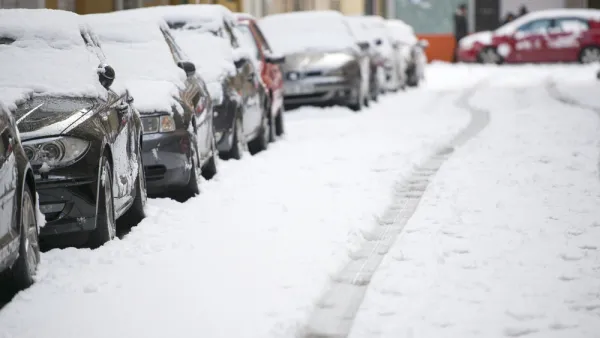Of the many reasons why the suburban lifestyle is falling out of favor with young Americans, reliance on automobiles is near the top of the list. Some suburbs are now figuring out that, to attract Millennials, they must also invest in better transit.

Hard as it may be to imagine, many of the original suburbs arose because of transit. "Streetcar suburbs" were built along trolley lines, whisking commuters from downtowns to leafy bedroom communities. Then came the car and, with it, the vast majority of current suburbs.
Now that younger Americans are not as enamored with cars as they once were, some suburbs are trying to figure out how to embrace transit as those original suburbs once did. Many of the new light rail lines being built across the country, such as those in Denver, Phoenix, and the Washington, D.C., area, are designed to connect suburbs with center cities. In fact, many of these lines are designed to serve a reverse-commute: companies that are located in the suburbs often hire employees who insist on living an urban lifestyle. That's the case in Raleigh-Durham, where a planned light rail line would serve the suburban Research Triangle Park.
"The growing millennial and boomer preference for working and living in more walkable, urban settings is also transforming the traditional suburban office park. Some office-park owners are planning townhouses, restaurants, shops, walking paths and bike lanes to create a town-center feel, even as these spots remain isolated from major transit stations. In places that are years away from new light-rail or rapid bus lines — if they ever get them — upgrades in traditional bus and shuttle service will be necessary to meet changing lifestyles, business leaders say."
FULL STORY: Suburbs such as Montgomery County rethink transit to court millennials

National Parks Layoffs Will Cause Communities to Lose Billions
Thousands of essential park workers were laid off this week, just before the busy spring break season.

Retro-silient?: America’s First “Eco-burb,” The Woodlands Turns 50
A master-planned community north of Houston offers lessons on green infrastructure and resilient design, but falls short of its founder’s lofty affordability and walkability goals.

Delivering for America Plan Will Downgrade Mail Service in at Least 49.5 Percent of Zip Codes
Republican and Democrat lawmakers criticize the plan for its disproportionate negative impact on rural communities.

Test News Post 1
This is a summary

Test News Headline 46
Test for the image on the front page.

Balancing Bombs and Butterflies: How the National Guard Protects a Rare Species
The National Guard at Fort Indiantown Gap uses GIS technology and land management strategies to balance military training with conservation efforts, ensuring the survival of the rare eastern regal fritillary butterfly.
Urban Design for Planners 1: Software Tools
This six-course series explores essential urban design concepts using open source software and equips planners with the tools they need to participate fully in the urban design process.
Planning for Universal Design
Learn the tools for implementing Universal Design in planning regulations.
EMC Planning Group, Inc.
Planetizen
Planetizen
Mpact (formerly Rail~Volution)
Great Falls Development Authority, Inc.
HUDs Office of Policy Development and Research
NYU Wagner Graduate School of Public Service





























